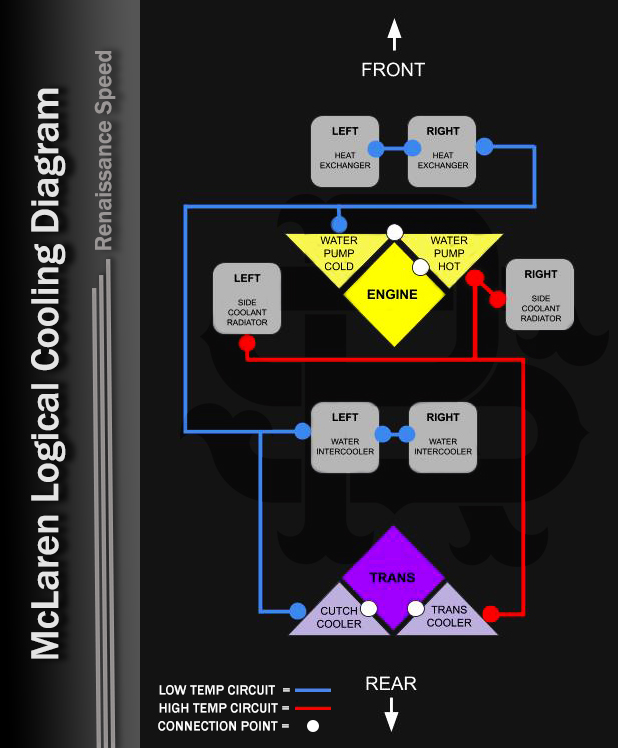McLaren’s Dual Cooling Circuits Demystified
The cooling circuit in most sports cars are fairly straightforward and consistent. For high strung turbocharged cars, not only do you need to control engine thermals (e.g. coolant, oil), but also the high intake air temps from turbochargers. Turbochargers can spin upwards of 200,000 rpms! As you can imagine, this creates a LOT of heat.
Without any intervention, intake air temps would soar past 200 deg F. Since hotter air is less dense, it contains less (densely packed) oxygen particles. Simply put, less oxygen in your intake stroke, means less power at the wheels.
For this reason, we need some form of intercooling to remove some of the heat and increase efficiency. The standard option for OEMs is air-to-air intercooling (e.g. Porsche 911 Turbo). Air-to-air intercooling has the added benefit of being lightweight (little plumbing, no pumps) and working very well at high speed. The negatives to air-to-air intercooling is heat soak when no air is moving over the intercooler fins; idle or low speeds. The placement of the intercoolers are also very limiting when designing the car aerodynamics since these need to be in direct airflow.
McLaren chose a different route on the P11, P12, P13 and P14; water-to-air intercoolers. Water-to-air intercoolers have the benefit of providing consistent intercooler temps, regardless of vehicle speed. They also can be tucked away under body panels and still work. The negative is more plumbing, since you now need “heat exchangers” to remove the heat from the water intercooler circuit.
The end result from McLaren is a total of 6 radiators and two coolant pumps* (2 water radiators, 2 intercoolers, 2 heat exchangers); not counting the oil, clutch and trans coolers!

To clarify, there is only one physical water pump, but it is a tandem unit with an internal separator between the cold and hot circuits. Over the years, we have seen the internal separation fail between circuits and create chaos.
This tandem pump is a great example of a compromise made by the factory since ideally there would be two separate pumps for each circuit. Moreover, the clutch cooler shares the same “low temperature” circuit as the intercoolers. This means that if you are doing serious work on the track or street with many up/down shifts, you are heating up your intercoolers and losing peak performance! For this reason, we have a high torque clutch upgrade from Dodson Motorsports and upgraded Race Intercoolers available.
For our most performance-oriented customers, we have “decoupled” the intercooler circuit from the clutch circuit. This is similar to how the McLaren P1 approaches powertrain cooling and has shown significant performance gains. However, this is a complicated procedure since it involves adding additional radiators, pumps, hoses and wiring. To our knowledge, we were the first to have a decoupled solution that works in the real world.
If you are interested in maximizing the performance of your cooling system, reach out to us for more information.
#mclarentrust #renaissancespeed
*tandem pump, one physical connection
